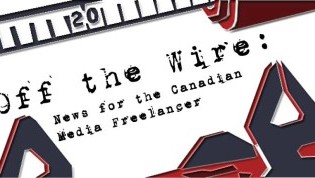This article on deadnaming and decolonization is written by Nadine Robinson, a freelance writer, professor and keynote speaker based in Sault Ste. Marie, Ontario.

Decolonize your writing and become LGBTQ2S+ friendly
Are you sending your work to editors chipped out on a stone tablet without knowing? If you haven’t upgraded to the 19th edition of the Canadian Press Stylebook you might appear more Neanderthal than you might like. Some important writing style changes have happened since the 18th edition was released in 2017, and regardless of that, there are times to get ahead of CP style.While not raised reading hieroglyphics, I still grew up with very different terms for Asians, Inuit, First Nations, the LGBTQ community, salespeople, and board chairs, among others. As language evolved, there were growing pains, but I tried to as well. Even if you don’t understand why an old term is suddenly offensive, if that group is saying that it is, that should be reason enough to update our parchment and quills.
Using chosen pronouns and avoiding deadnaming, and decolonizing language and respecting Indigenous worldviews, are two of the most notable changes in the 2021 CP Style edition. How to clearly write about climate change, sexual misconduct, and the ever-evolving language around COVID-19 are also reflected in the 19th edition.
Deadnaming and Pronoun Usage
Back in early 2022, I found myself (as a freelancer) in an email dustup with a staff writer.The reporter in question had deadnamed a celebrity’s child and used their former pronoun. Since I had passed him the story (and because I felt morally obligated) I asked him to change the pronoun and remove the deadname. He argued that it was factually accurate and that the new pronoun would “confuse readers.”
For background, a transgender or non-binary person’s “deadname” is their birth or given name. It is called a deadname as the name is considered as dead as their former gender identity. “Deadnaming” is when anyone, including the media, uses their birth name instead of their chosen name, without their consent.
Deadnaming can be accidental, like when I didn’t know my friend’s child’s new chosen name. It can also be a lack of emotional intelligence. My trans friends have since explained that it is often seen as an overt or micro aggression delegitimizing their new identity.
So…I suggested alternate wording that would remove the deadname, correct the pronoun, and not affect the context of his excellent article. Even with my well-intentioned overstep, the story ran as it was originally written. To make myself feel better I did some research, and sent it to them for future reference:
- The 18th edition (2017) of the Canadian Press Stylebook reads: “confirm with the person how they wish to be described in print, including their preferred pronouns—male, female or gender-neutral pronouns like they and them”
- The 19th edition (2021), has an important addition on deadnaming: “When writing about someone who has transitioned, avoid using their former name”
- Wikipedia only allows the use of a deadname if the person was notable before the transition (like Jenner)
- The Associated Press updated their stylebook in 2019: “Use the name by which a transgender person now lives. Refer to a previous name, sometimes called a deadname, only if relevant to the story”
- The Trans Journalists Association (TJA), released a style guide in August of 2020, to avoid harmful narratives, which states: “There’s never a reason to publish someone’s deadname in a story”
Decolonizing Your Writing
The 19th Canadian Press Stylebook notes that the word Indigenous should be capitalized. The Indigenous Tourism Association of Canada (ITAC) posted a media style guide asking writers to choose Indigenous Style over Canadian Press Style, including where capitalization may be different.Here are a few terms that are capitalized under Indigenous style:
- Aboriginal
- First Nations
- Indigenous
- Elder
- Oral Tradition
- Clan
- Protocols
- Traditional Knowledge
- Indigenous Right
- Treaty Right
They recommend that Indigenous Peoples are referred to in the present tense and that the possessive not be used, as they have not been assimilated.
“Avoid the phrase ‘Canada’s First Nations.’ Instead, use ‘Indigenous People in Canada,’ or ‘First Nations, Métis, and Inuit Peoples in Canada.’”Further, the guide highlights that Indigenous Peoples are not a homogenous group (they have distinct cultures and heritages).
“The Indigenous population in Canada is made up of Inuit, Métis, and some 634 different First Nations.”Ask for the name of the community or nation if there was no self-declaration.
Also, writers are asked to remember that Oral Tradition and Traditional Knowledge should be considered as holding its own copyright and to ask permission before reprinting them.
As professionals, at a minimum we need to meet Canadian Press Style, but there are times when we need to write ahead of it, even if a few stone tablets get smashed along the way.
Next Post: Navigating NaNoWriMo with ADHD: One Freelance Writer’s Experience
Previous Post: How rural community newspapers defy industry challenges and deliver vital stories
Search
Recent Posts





